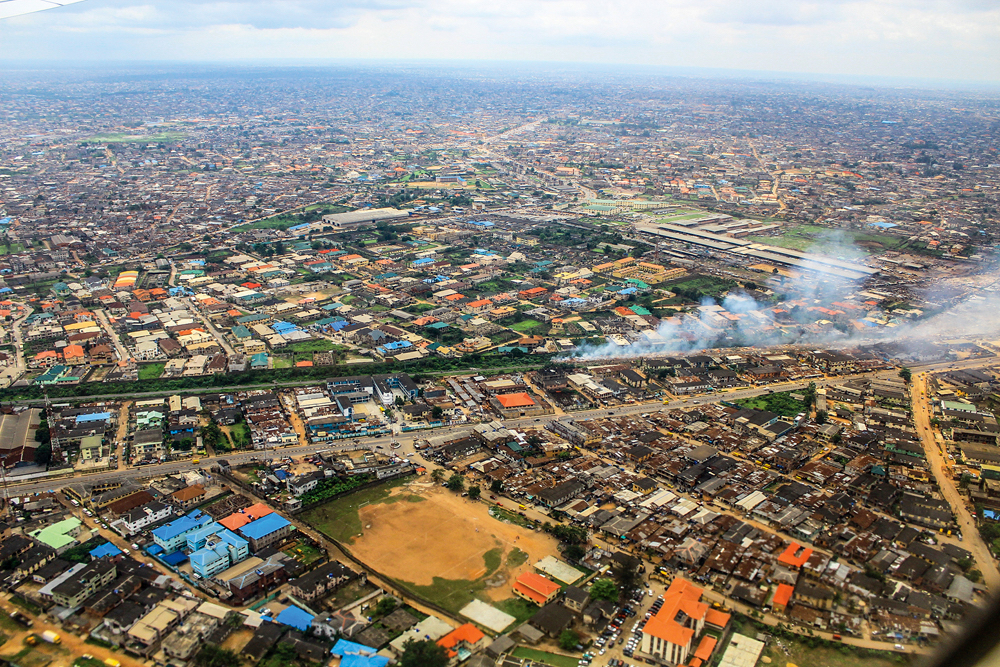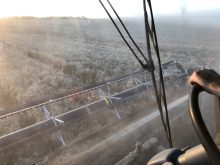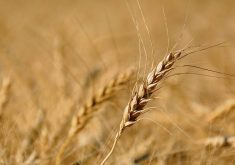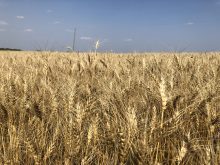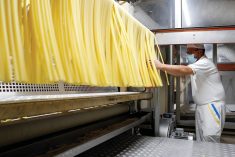Quality counts, whether in developing markets or established ones.
That was a key takeaway for two Prairie farmers who participated in New Crops Missions prior to Christmas.
“I was surprised in Ghana that two of the millers were using 100 per cent Canadian wheat,” said Kevin Bender, outgoing Alberta Wheat chair and a Cereals Canada rep on the trade missions organized by Cereals Canada, Cigi (Canadian International Grains Institute), and the Canadian Grain Commission.
“They don’t blend it with anything. That’s a market we definitely want to hang on to and preserve.”
Bender said many countries are pleased with the quality and consistency of Canadian wheat.
“When I’d been to Nigeria before, one of the men, I think he was a miller said, ‘With Canadian wheat, I can just start the mill and go to sleep,’” he said.
The durum market has been anything but sleepy, particularly in Italy where a country-of-origin labelling law and sensationalized ‘contamination’ claims have battered Canadian durum exports.
But there, too, millers love the quality of our grain, said Scott Hepworth, vice-chair of Saskatchewan Wheat, who travelled to Italy and North Africa on his crop mission.

“Italy was better than expected,” said Hepworth, who farms near Assiniboia, southwest of Moose Jaw. “There’s no replacement for the quality of Canadian durum. That’s been a waiting game that we’ve been watching.
“They need and want Canadian durum and right now, it’s selling at a discount. There’s hope for the future with Italy for sure.”
Canadian durum was locked out of the Italian market for much of the past year with the country’s activist farmers’ union claiming — falsely — that Canada’s durum contained high levels of glyphosate and vomitoxin. The campaign against Canadian durum was widely viewed as an effort to limit imports and drive up prices for Italian wheat farmers.
Read Also

Grazing ‘sweet spot’ boosts pasture performance
Timing-focused approach to pasture management touted to boost forage growth, livestock gains while also cutting farmer labour and inputs
But following a lower-than-expected durum crop in Italy this year, things are changing.
“I think there’s still a need for Canadian high-quality durum there,” said Hepworth. “We’re hopeful. Durum sales have picked up into Italy over the past few months. I believe we’ll see an increase, (although) obviously not to normal levels. There’s still a lot more work to be done.”
There’s also been a bit of a rebound in sales to the Philippines, although the situation is much different there.
The country, which hasn’t been a consistent customer, had reduced the amount of wheat it had bought from Canada, but that’s changing, said Bender.
“Some of that they claimed was on (low) gluten strength in the past, but they’re coming back to the market,” said the Sylvan Lake producer.
Bender, who travelled with millers, bakers, and pasta makers as well as industry officials, also made stops in the United Arab Emirates and Nigeria as well as Ghana and the Philippines.
“One thing that surprised me a little bit in the hotter climates was concern about the moisture levels for wheat,” he said. “Here, 14.5 (per cent moisture) is what the grain commission sets for safe storage for CWRS wheat, which is fine with our climate.”
But that doesn’t cut it in countries where the temperature can top 45 C with very high humidity.
“Storage can be an issue when you get into those high temperatures and over 13 (per cent moisture),” he said. “They can’t store it for long periods without moving it, which costs money. That was something that was a concern to them.”
Getting to know which millers use wheat right away and which ones store it for a month or more is the sort of granular detail that members of the New Crops Missions bring back home.
While quality is a given, price is always a concern for overseas buyers, Bender noted.
“That goes without saying. If you are using large quantities, you want the best quality for the best price. They don’t want to pay more than they have to.”
The knowledge exchange goes both ways.
For example, some of the Filipino buyers who Bender talked to expressed interest in Canadian Prairie Spring.
“There were some inquiries about hard white winter wheat, which we grow little of,” said Bender, adding that he replied Canadian farmers would be open to growing more if they see a suitable profit.
He described the Ghanaian market as very stable, and the Nigerian market as growing.
“Lagos is the most populated city in Africa,” he said. “It’s a large market, still with potential to grow. There’s always the risk of instability there. That’s true of a lot of African nations. It’s a market that is valuable and we need to keep that one.”
The team Hepworth travelled with talked regularly about sustainable growing practices in Western Canada and how that leads to high-quality durum.
“There’s no replacement, in my opinion, for the quality of durum that western Canadian farmers produce,” said Hepworth.
There was never a shortage of questions about production practices and about quality.
“Morocco and Algeria are big buyers of quality durum for their couscous market,” he said.
It was Hepworth’s first New Crops Mission and he was impressed by the relationships that can be established with buyers.
“On the durum side of things, it was an easy message,” he said. “We’ve got the best-quality durum that we’ve ever grown. Typically, in the past, in 2016, they were worried about our DON levels.
“This year, there were no negatives in the crop. We just produced really good durum this year.”
However, durum prices are low because of less than robust demand, a situation partly due to Italy’s actions.
“On the flip side, there’s a good demand for Canadian spring wheat right now,” said Hepw
orth. “That’s why we’re seeing the price differential between the two. It isn’t common, but the supply and demand for wheat and durum are almost opposite right now.”


